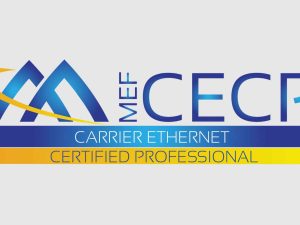Telefocal Certified SDN NFV Professional (TC-SNP)

Course Overview
SDN provides a revolutionary approach and a paradigm shift in designing, building and managing the next generation networks that allow a logically centralised or distributed software program to control the behaviour of an entire network. The basic concept of abstracting the control logic from the underlying physical infrastructure allows network operators to write high-level control software that specifies the behaviour of an entire network programmatically and dynamically. This is in contrast to conventional networks whereby functionality is embedded low-level in the physical infrastructure.
Logically-centralised control allows operators to specify more complex tasks that involve integrating many disjoint network functions – NFVs – (i.e. policy control, firewall, security, and prioritization) into a single control framework. Therefore, it allows operators to create more sophisticated policies and configuration which are easier to configure, manage and troubleshoot.
Both SDN and NFV are the catalyst technologies that will transform current networks into networks that are agile and, in addition, have the propensity to fulfil future business requirements.
The course will also include lab sessions. Participants will be put through lab work, which consists of network configuration, code samples and setup scenarios. They will also be put through a set of quizzes that are administered online. Should a minimum score for these examination be achieved, it would lead to the candidate being certified as a Telefocal Certified SDN NFV Professional.
Target Audience
This course is designed for professionals who are interested to understand this important revolution in IT and networking.
- Radio and Packet Core Network Engineers
- Managers
- Project Managers
- IP Engineers
- Packet Core Engineers
- Technical Product Managers
- Technical Marketing Officials
- Technical Strategy Officials
- IT Managers
- C-level Decision Makers & Executives
Duration & Training Format
- Classroom: 5 days
- LIVE Virtual: 35 hours
- A minimum of 8 or more participants is required for a Classroom session to commence.
- A minimum of 6 or more participants is required for a LIVE Virtual session to commence.
- LIVE Virtual courses can be conducted for 5 hours or 7 hours daily. Please note that the number of training days will be extended if you opt for 5 hours daily.
Upcoming Course Dates
4 – 8 Aug 2025 (Mon – Fri), GMT +8
If you are keen on attending this course, please register your interest via our course enquiry form.
Course Objectives
The aim of this course is to provide participants with a deep technical understanding of the two most important, yet potentially disruptive, network technologies that would transform the way networks and CSPs operate: Software Defined Networking (SDN) and Network Functions Virtualization (NFV).
This course will lead to a professional certification by Telefocal Asia after participants have successfully passed
the online examination on the last day of the training.
At the end of the course, the participant will be able to:
- Assimilate the core concepts of Virtualization, Cloud Computing, Virtualization of network elements
- Discuss and compare the main global initiatives on SDN and NFV
- Understand why NFV offers extraordinary potential to enhance the
delivery of carrier and enterprise network services - Explain the revolution in NFV, SDN, OpenFlow, OpenStack, and Cloud Computing
- Describe the key benefits of SDN and the separation of Data and Control Planes
- Describe the SDN Data Plane
- Perform detailed analysis of the SDN Control Plane operation
- Evaluate a sample SDN’s performance and reliability
- Explain Network Virtualization and describe NFV reference architecture
- Describe techniques used for verification and debugging of SDNs
- Describe NFV components and how they work together
- Explain how to create new network services using SDN and NFV
- Describe the role and functionality of middle boxes in networks and how they are managed
- Describe architecture and operation of the SDN-based RAN and Core
- Describe applications of NFV and the value they bring
- Describe Orchestration, Service Chaining and other related techniques
- Discuss how VoLTE, IMS and other services and operations will operate in the Cloud
- Discuss SDN/NFV attack vectors and security best practices
- Describe The Third Network and Lifecycle Service Orchestration (LSO)
- Understand NFV onboarding, management and orchestration through hands-on exercises
- Understand SDN stack operation through hands-on exercises
Course Outline
- Fundamentals of Modern Networking
- The Networking Ecosystem
- Networking Technologies: WiFi, Ethernet, Carrier Ethernet, 4G
- Cloud Computing
- Network Convergence
- Unified Communications
- Internet of Things (IoT)
- Requirements of Modern Network Traffic
- The Need for Software Defined Networking in Mobile Networks
- Present Mobile Networks and their Limitations
- Distributed Control Plane
- Centralised Control Plane
- Introduction to OpenFlow
- Hybrid Control Plane
- NETCONF/YANG
- vSwitches and vAppliances
- Key Benefits of SDN/NFV in Mobile Networks
- SDN / NFV Standardization, Alliances and global initiatives
(opendaylight, openstack, ETSI, ONF, CloudNFV, ITU, IETF, IRTF, ON.LAB/ONRC, OpenContrail, OVA, OPNFV, OCP, ODCA, Open Config, Floodlight, E-Comp, OASIS, TOSCA, OpenMANO, OPEN-O, OIL…) - Industry Initiatives – Global Network Operators
- SDN Deep Dive
- SDN Framework
- SDN Controller Environment
- Network Programmability
- SDN Case Studies
- Virtualization and Network Virtualizations
- Why use Virtualization
- Introduction to Hypervisors
- Hypervisor Models (QEMU, KVM, XEN, LXC, VMWare…)
- Virtual Switches and Routers (i.e. Open vSwitch)
- Network Function Virtualization
- NFV Concepts
- NFV Architcture
- NFV Function Chaining
- Services Engineered Path
- Service Locations and Chaining
- ETSI NFV ISG Models
- Non-ETSI NFV Work
- Example Network Virtualization Functions
- Network Topology and Topological Information Abstraction
- Network Topology
- Traditional Methods
- LLDP
- BGP-TE/LS
- ALTO
- I2RS Topology
- Security Challenges in SDN
- Securing the Controller
- Protecting the Controller
- Robust Policy Framework
- NFV Application Lifecycle
- NFV & SDN Complementary Nature
- Opex & Capex Pressures
- Time to Market Considerations
- Heterogeneous Vendor Network Infrastructure
- Moving towards Non-Proprietary Purpose Built Platforms
- SDN and NFV applied to LTE and beyond
- RAN in the Cloud
- SDR vs SDN
- Cloud RAN
- Multi Network Planning
- Inter-cell Interference Management and Dynamic Offloading
- Edge Caching and CDN
- Topology Discovery
- RAN Slicing
- Mobile Core in the Cloud
- Centralised vs. Decentralised vs. Hybrid Architecture
- Dynamic Management
- Dynamic Provisioning and Orchestration
- Service Chaining and Orchestration
- Resource Optimization for Dynamic Environments
- Customer Edge Switching and UE Multihoming
- Automation to Streamline Operations
- Granular Control and Policy Management
- Meta-Policies
- Network Slicing
- Traffic Steering
- Mobile Traffic Management and ALTO-SDN
- Load Balancing
- QoE Enforcement (QEN)
- Pervasive Monitoring
- Cognitive Network Management
- Cloud-based Network Operators
- CNO Features
- CNO Architectures
- Cooperation between CNOs and MNOs
- Services and Flexible Business Models
- Advanced vApps
- SDN/NFV Security
- Security Attack Vectors
- Security Impacts
- Security Best Practices
- SDN Hands on Workshop (~ 2 hrs)
- Implementation example: VM / OpenStack / OpenDaylight / Open vSwitch / OpenContrail
- Dockers and Kubernetes
- Configuration and Running without a Controller
- Reference Controller (PTCP) Implementation and Operation
- POX Controller Providing Hub/Bridge Behaviour
- VLD-Examples (E-line, E-LAN)
- NFV Hands on Workshop (~ 5 hrs)
- VNF Onboarding
- VNF Management
- VNF Scaling and Balancing
- VNF Orchestration/MANO
- Examination
- Testing Theoretical Concepts
- Testing Industry Best Practices
- Testing Practical (Lab) Examination
- Scoring 60% or higher in the written exam AND
- Achieving at least 75% attendance for the course.
Key Benefits
At the end of the course, participants will be able to design, plan and operate a best-in-class software defined network infrastructure that not only offers leading edge virtual applications, but also, satisfies both current and future market requirements.
Other benefits include:
- Global recognition that you have attained a professional level of knowledge and expertise on the subject matter
- Demonstration of competence in both the theory and practical aspects of SDN/NFV
- Testimonial to your company’s adherence to industry’s standard practices, as well as your personal commitment to this domain via your professional certification
- Career advancement prospects by candidates in the field of SDN/NFV
Pre-requisites
- A basic understanding of IP-based communication is highly recommended
- A reasonable knowledge of core networking principles and functions
- Experience with IT infrastructure (i.e. ethernet, switches, routers)
- Basic understanding of software design principles (i.e. APIs)
- Basic to intermediate level programming is required for this course


